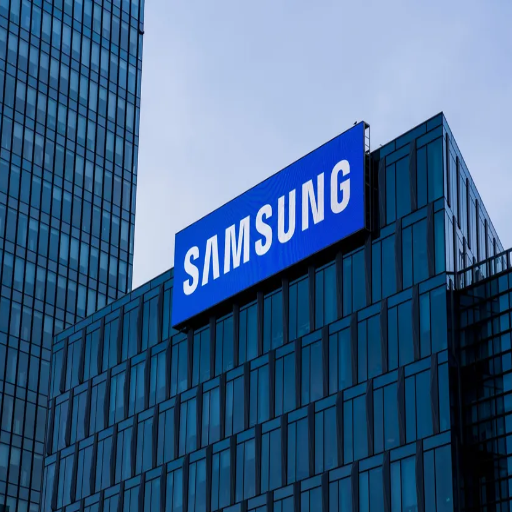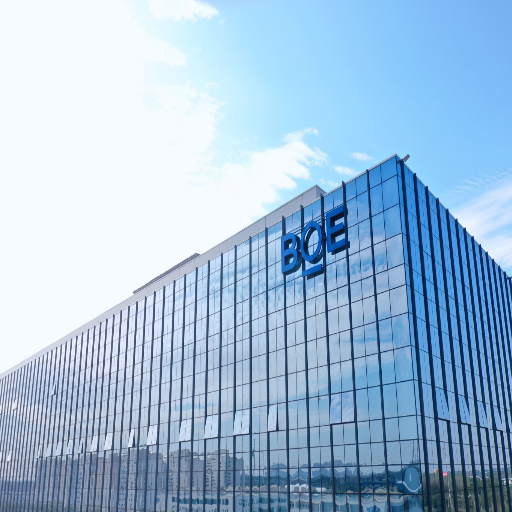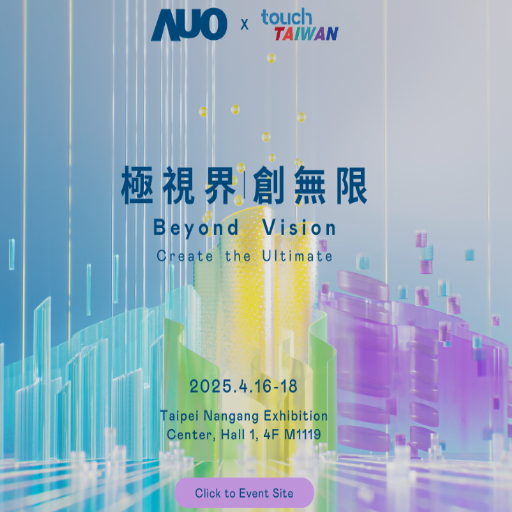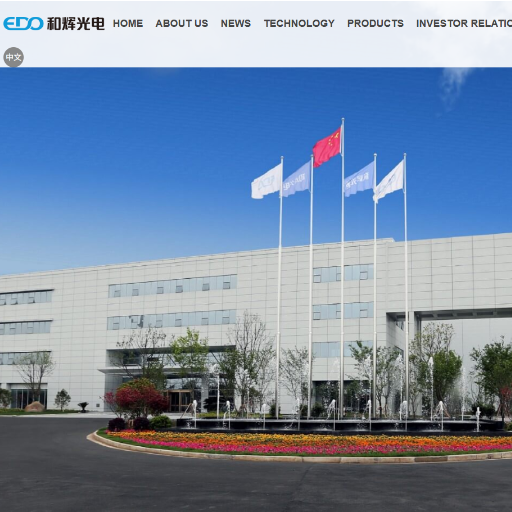The display of an iPhone is more than just a screen; the colors and detail are a product of artistry. Let alone, the iPhone’s touch responsiveness works flawlessly. It requires several manufacturers working together to achieve perfection on the iPhone’s display. Their contribution to the device is a primary factor in Apple’s user experience. In a world filled with competition, the fact that iPhone separates itself from the others is that it’s the manufacturer we will discuss. In this blog, we will go through the wonders of the smartphone world and Apple, with the top ten iPhone display manufacturers, their smartphone technologies and capabilities, and what they have contributed to the smartphone world. This article will provide the apple lovers and ordinary people with an in-depth investigation of the creative minds behind the modern display systems.
1. Samsung Display
Year Founded: 1991
Introduction: Samsung Display is part of Samsung Electronics and one of the world’s top producers of OLED and LCDs in devices such as iPhones. The company is known for its innovations in mobile display technology and contributions to the industry.
Main Products: Displays such as OLED displays, AMOLED displays, LCD panels, and QLED technology.
Key Advantages: Strong global presence, high-quality OLED technology, advanced R&D capabilities, large production capacity.
Key Disadvantages: Limited clientele, high production costs.
Website: https://www.samsungdisplay.com
2. LG Display
Year Founded: 1985
Introduction: Another company from South Korea, LG Display, has been manufacturing and selling monitor and television panels since 1985. Equally important, LG has been a major supplier for Apple, producing iPhone LCD and OLED displays.
Main Products: OLED screens, LCD screens, OLED panels with flexibility.
Key Advantages: OLED technology leadership, global electronics companies as partners, and flexibility in display dimensions.
Key Disadvantages: Competing industry peers and decreasing profits relative to the industry.
Website: https://www.lgdisplay.com
3. BOE Technology Group
Year Founded: 1993
Introduction: BOE Technology Group (BOE) is one of the leading Chinese display manufacturers. Its innovation and capture of market share in displays is gaining the attention of the international industry. More recently, it has provided components for Apple’s iPhones.
Main Products: We produce graphics display technology, including OLED screens, LCD panels, microLEDs, and flexible displays.
Key Advantages: Competitive pricing, consistent technology improvements, large-scale production possibilities, and supply responsiveness.
Key Disadvantages: Gained industry reputation and risk exposure due to global customer reliance. Consistency issues hampered quality.
Website: http://www.boe.com
4. Japan Display Inc. (JDI)
Year Founded: 2012
Introduction: JDI is part of Apple’s supply chain. Sony, Toshiba, and Hitachi formed JDI, specializing in manufacturing Integrated LCD and OLED displays. JDI has sourced displays for Apple’s earlier iPhone models.
Main Products: Automotive displays, mobile device displays, LCD panels.
Key Advantages: High precision display panels and proprietary technology mastery in the field of LCDs.
Key Disadvantages: Financial instability and insufficient focus on R&D for OLED displays compared to peers.
Website: https://www.j-display.com
5. AU Optronics (AUO)
Year Founded: 2001
Introduction: A publicly traded company on the TSEC, AU Optronics focuses on the research, development, production, and marketing of display panels. Its subsidiary in Taiwan concentrates on producing high-end screens for electronics such as smart mobile phones.
Main Products: LCD Displays, AMOLED Displays, UHD 4K Displays.
Key Advantages: Wide coverage in product range offered and strong footholds within niche sectors such as gaming and flight simulator displays.
Key Disadvantages: Weak coverage in the market for OLED technology and dependence on a handful of industries.
Website: https://www.auo.com
6. EverDisplay Optronics (EDO)
Founded: 2012
Introduction: Corporacion EDO is a China-based company that manufactures AMOLED displays for consumer electronics and wearable devices.
Main Products: AMOLED small-sized display panels for wearable gadgets.
Key Advantages: Focused expertise on AMOLED displays with growing performance in niche market segments.
Key Disadvantages: Lack of breadth compared to competitors and dependence on a narrow range of products.
Website: http://www.everdisplay.com
7. Visionox
Founded: 2001
Introduction: Visionox is a Chinese OLED screen manufacturer and technology developer. The company is recognized for its breakthroughs in flexible and transparent displays.
Main Products: OLED panels, flexible OLED displays, and transparent displays.
Key Advantages: Waiting for new technologies to emerge and lower cost than competing products.
Key Disadvantages: Strong competition within the industry and a small international footprint.
Website: http://www.visionox.com
8. Innolux Corporation
Founded: 2003
Introduction: Another notable company from Taiwan, Innolux Corporation, is well known for manufacturing sophisticated display panels for various industries, from consumer electronics to automobiles.
Main Products: LCDs, OLED panels, along with touch modules.
Key Advantages: Excellent dependability, economical pricing, and versatile manufacturing processes.
Key Disadvantages: Stiff rivalry from other Asian competitors and a lack of offerings in high-end products.
Website: https://www.innolux.com
9. Tianma Microelectronics
Year Founded: 1983
Company Overview: Tianma is a leading display technology company based in China. It focuses on mobile and industrial handheld displays.
Industry: Manufacturing.
Primary Products: LCD AMOLED screens as well as touch screens.
Strategic Competencies: Well established in the domestic market, strong focus on medium and small display technologies, and affordable pricing.
Strategic Liabilities: Lack of presence in international markets and larger competitors.
Website: http://www.tianma.com
10. Sharp Corporation
Founded: 1912
Introduction: Sharp Corporation is a major Japanese electronics company that is distinguished by sophisticated display technologies. It manufactures high-quality LCD panels used in smartphones and other devices.
Main Products: LCD panels, IGZO displays, and OLED screens.
Key Advantages: Advanced IGZO technology, long-standing reputation, and high product quality.
Key Disadvantages: Limited share of the OLED market and intense competition from other international firms.
Website: https://global.sharp
Frequently Asked Questions (FAQs)
Q: Who are the largest iPhone display manufacturers in the United States?
A: The largest iPhone display manufacturers in the United States include well-known companies such as LG and Samsung, major suppliers to Apple.
Q: What role does BOE play in the manufacturing of iPhone screens?
A: BOE is a prominent screen supplier and has been involved in producing iPhone screens, though their panels have not yet passed Apple’s final validation for specific models.
Q: How do OLED displays enhance the functionality of iPhones?
A: OLED displays provide superior contrast, deeper blacks, and more vibrant colors, enhancing the overall visual experience and functionality of iPhones such as the iPhone 12 and iPhone 14.
Q: What is the significance of the iPhone 15 screen design?
A: The iPhone 15 screen design is crucial for achieving optimal performance and incorporates advanced technology that potentially enhances the user experience.
Q: Are iPhone 12 screens available for replacement?
A: Yes, iPhone 12 screens are available for replacement. It is essential to purchase genuine parts to ensure optimal performance and secure functionality.
Q: How do LG and Samsung contribute to the supply of iPhone screens?
A: LG and Samsung are critical suppliers providing high-quality OLED and LCD panels for various iPhone models, including the iPhone 14 and iPhone 15, ensuring reliable supply and innovation.
Q: What testing do iPhone displays undergo before shipment?
A: iPhone displays undergo rigorous testing to ensure they meet Apple’s premium standards for quality and performance, although some panels from new suppliers may not yet pass Apple’s final validation.
Q: How does the combination of LG and Samsung benefit Apple’s business?
A: The combination of LG and Samsung as suppliers allows Apple to secure a steady supply of high-quality screens, which is crucial for meeting the production demands of popular models like the iPhone 15 Pro and iPhone 13 Pro Max.
Q: What features are expected from the iPhone 15 Pro Max screen?
A: The iPhone 15 Pro Max screen is expected to feature advanced technology such as higher refresh rates and improved durability, enhancing user experience and device longevity.
Q: Is the expense of genuine iPhone screen replacements justified?
A: Yes, the expense of genuine iPhone screen replacements is justified. They ensure the device maintains its premium functionality and performance, reducing the risk of issues arising from third-party components.

















